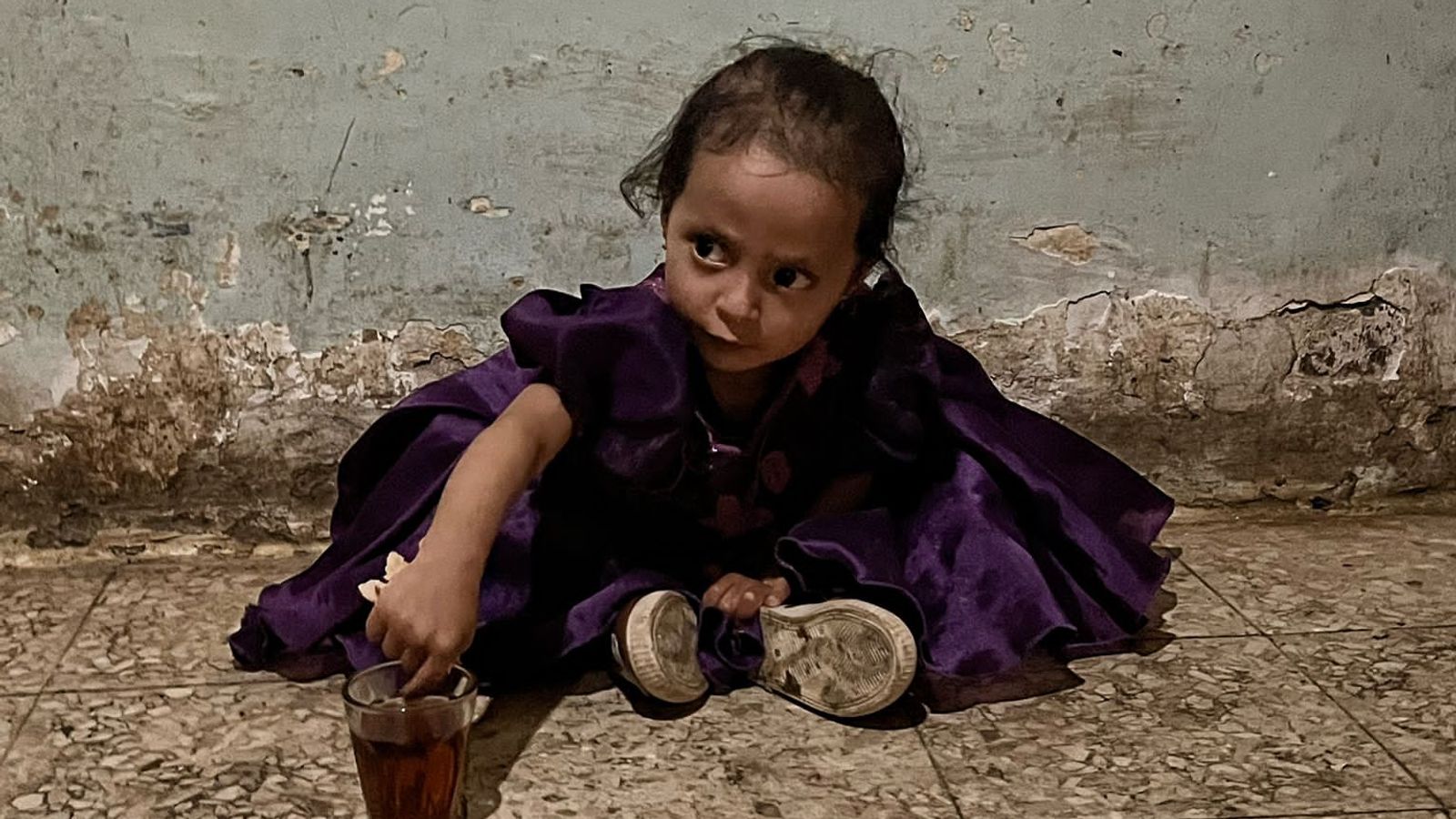Two pickup trucks with half a dozen heavily armed men on board escort us on the journey into the besieged city of Taiz.
They stay with us the entire three days we are inside the city. The talk may be increasingly of potential peace in Yemen but the war has never stopped in Taiz.
The city is split in two with Houthi militia controlling one half and government troops holding the other side.
We have to go through nearly 30 armed checkpoints between the port city of Aden and Yemen’s third-largest city. It’s a distance of 200km (125 miles) and in the days before the war, the journey used to take about two hours, sometimes less.
Now, most roads are cut off by fighting, insecurity or territorial gains.
The city is reachable only through dusty, rocky paths which wind along some treacherous mountainsides.
And the journey means crossing territory held not just by government troops but also by different separatist groups who’re fighting for independence.
Luke Symons: British man released from Yemen after five years in prison without a trial
Boris Johnson welcomes two-month truce in Yemen civil war
Saudi Arabia Grand Prix to go ahead after Yemen rebels target oil depot as fire breaks out near F1 race circuit
There are still small pockets of Islamic extremists but they’ve been largely neutered in this grinding conflict which has evolved into a regional proxy war, fuelled by Saudi Arabia supporting the internationally-recognised government and Iran which has been backing and arming the Houthi militia.
Right now, the journey can take six hours and many traders talk of having to pay “fines” at the multiple checkpoints as they transport much-needed supplies into Taiz. It’s made the journey both dangerous and expensive.
The siege imposed by the opposing Houthi militia has resulted in a slow choking torture for those civilians left in the city.
They struggle for food, find water, and to make any sort of living. We find several families camping in abandoned, bombed buildings near the frontline dividing the two opposing groups simply because it was “rent-free”.
One father called Mohammed tells us he’d had three children born during the siege while living in the basement of a bombed-out former shopping centre.
“Of course, I worry about their safety,” he says. “It’s not safe here. But I try to keep them inside as much as possible and tell them not to go out when we hear the explosions and shelling.”
Many of the homes are incubators for rockets and shells which have embedded themselves in the buildings but not yet detonated.
They all tell us of their fear of Houthi snipers who position themselves on high-rise buildings and pick off civilians including children and pensioners.
‘I will never leave my home’
We find Qabool Ahmed Ali, who says she is about 70 years old, in a hospital with a sniper bullet wound in her back. The bullet had exited her arm.
“I refuse to be pushed out of my home,” she tells us about her house near the frontline. “The Houthis kept shouting to me ‘why you still here you crazy woman?’, but I will never leave my home.”
Some of those still there hang sheets and blankets up between their houses to try to obscure the snipers’ view as they move from home to street. And they’ve piled sand down certain streets to stop vehicles moving and attracting gunfire.
It’s dangerous, high stakes living in Taiz and with the enemies only a few hundred metres apart, there’s been constant if sporadic engagement between the two sides despite nationwide agreed truces and a lull in fighting for the best part of a year.
We see fighters moving around on motorbikes with their weapons slung over their shoulders.
‘We want peace,” 23-year-old Khalid Ali tells us. “It’s they [the Houthis] who don’t. They kill innocent people, even children, so we keep our weapons to defend ourselves.”
And there are tragically repetitive tales of children and families hit by random shells fired indiscriminately and without warning.
Children killed while playing outside
Fatima – who is a mother of nine – is beside herself with grief as she shows us the photographs of what happened to four of her children the day they were caught up in a shelling. The images of her dead and mutilated children are all she has left of them.
They are horrifying pictures showing how their young bodies were ripped apart by the explosion. Four of them were hit while playing together outside their home. The eldest, Leila, was around 12. She, her brothers Hameed, who was 10, and seven-year-old Mahmoud were killed outright.
Three-year-old Hamid survived but his left leg was amputated and he’s still receiving treatment in Jordan with his father by his side. Their youngest, two-year-old Malak, picks up the photographs as her mother is talking to us and beckons to her saying “Mahmoud! It’s Mahmoud”.
Her mother responds through sobs. “Mahmoud is not coming back habibbi [my love]. He’s gone now,” she says.
Fatima has compiled a file to try to document what happened to her children. She wants justice.
“I want whoever did this to pay for what they did to my children. They were just children, just children. What did they do to deserve this?”
Alex Crawford reports from Taiz in Yemen with Sky Middle East editor Zein Ja’Far, cameraman Jake Britton and producer Ahmed Baider.
Be the first to get Breaking News
Install the Sky News app for free








